Using Javascript and WebCL for Numerical Computations

Background and Motivation
Clumsy Origins

- Many new uses
- Servers
- Robotics
- Game Dev
- Running Linux
- Presentations... :)
Current Javascript Uses
Performance
- asm.js
- high performing subset of JS
- WebCL
- GPU access in browser
- node-cuda
- GPU access in NodeJS
- Typed Arrays
New Performance Requirements
var first = 5;
//By using a bitwise
//operator, we make sure
//that the value is 32-bit integer
var second = first | 0;// Unsigned int array
var arr = new Uint32Array([21,31]);
console.log(arr[1]); // 31
// Float 32 bit array
var arr = new Float32Array([21,31]);
console.log(arr[1]); // 31Speed

... but is it fast enough?

Is it good enough for number crunching?
- Represent patterns of numerical computations
- Sparse Linear Algebra
- N-body methods
- Map Reduce
- Dynamic Programming
- Combinatorial logic
- etc
Thirteen Dwarfs

Sequential Performance
Driving Questions
- Is performance of Javascript competitive with C?
- Do typed arrays improve the performance of Javascript?
- Does asm.js offer performance improvements over handwritten Javascript?

Configuration
- Native code
- C (compiled with gcc)
- Javascript
- Handwritten
- Typed arrays
- asm.js
- Transpiled from C using Emscripten
Browser Comparisons
JS and asm.js vs C - Chrome
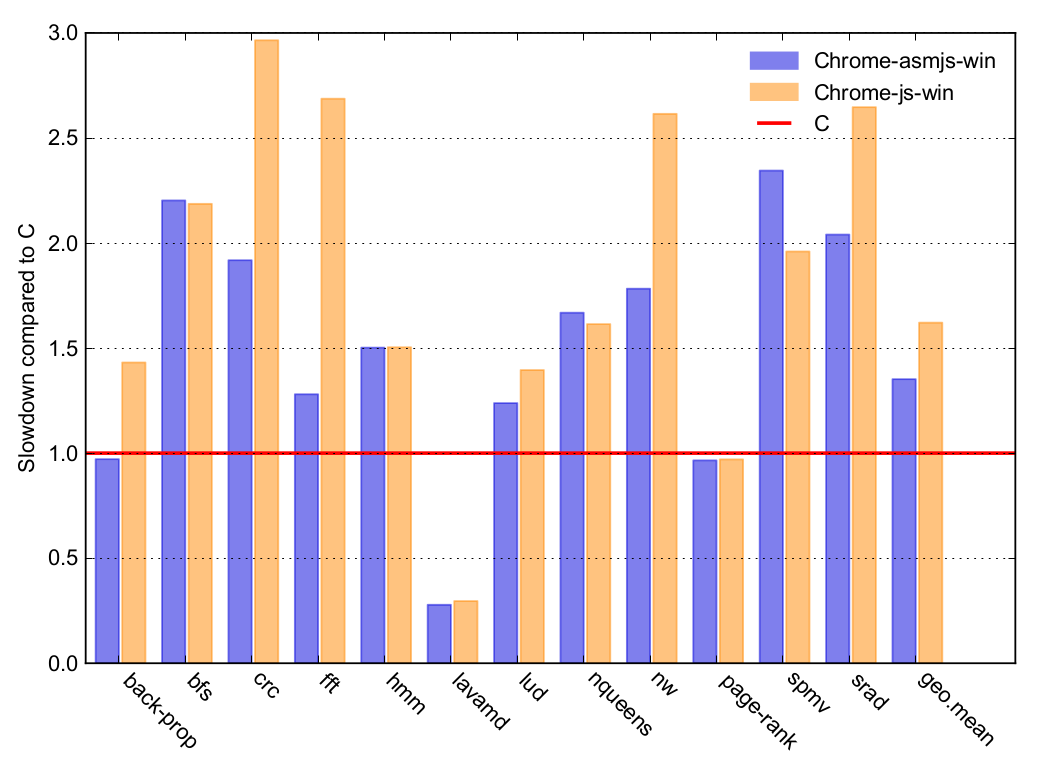
16 out of 24 have a slowdown below 2x
No tests are more than 3x slower than C
Lavamd is 4x faster than C
Slowdowns are 1.62 and 1.35 for JS and asm.js, respectively
JS and asm.js vs C - Firefox

Only one asm.js benchmark has a slowdown higher than 2x
In 4 tests, at least one JS benchmark outperforms C
Slowdowns are 1.65 and 1.17 for JS and asm.js, respectively
JS and asm.js vs C - IE
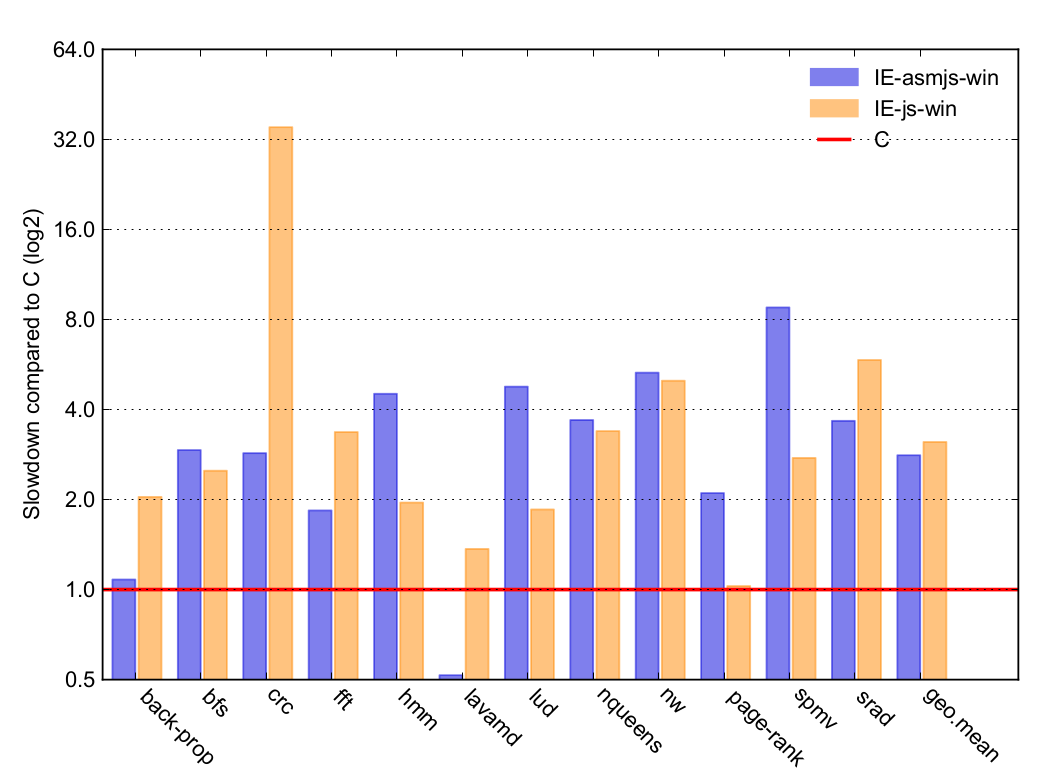
Worse performance than other browsers
crc is 35x slower than C
Average slowdown is 3.11 and 2.18 for JS and asm.js in IE
JS and asm.js vs C - Safari
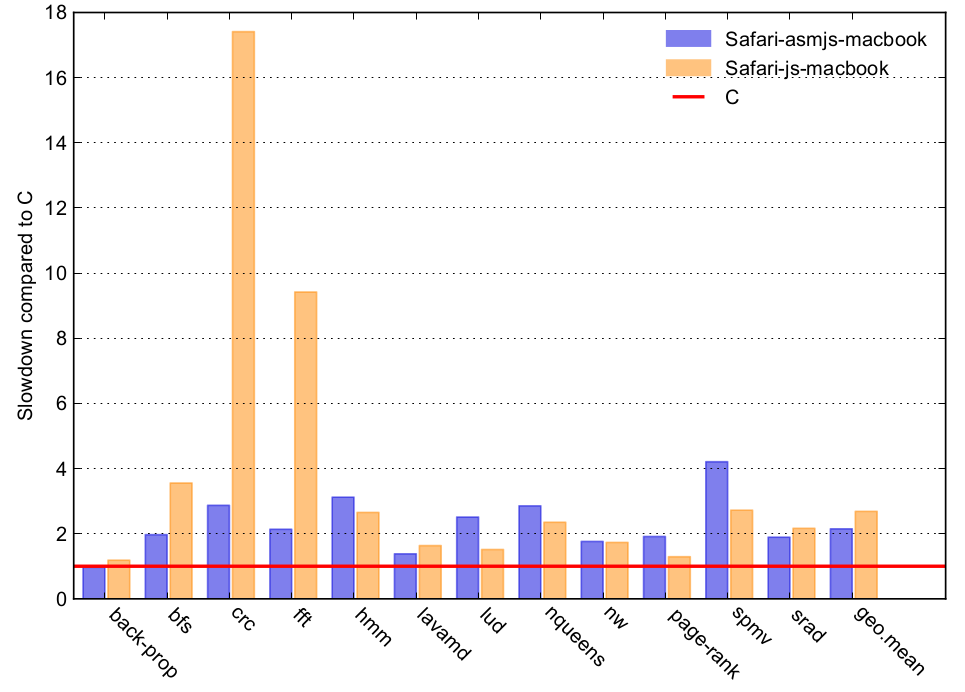
Suggests a performance optimization missed by Safari's JIT compiler
Average slowdown is 2.69 and 2.15 for JS and asm.js, respectively
crc and fft have a severe penalty in JS at 17x and 10x
Typed Arrays
Typed Arrays vs untyped (js-nota)
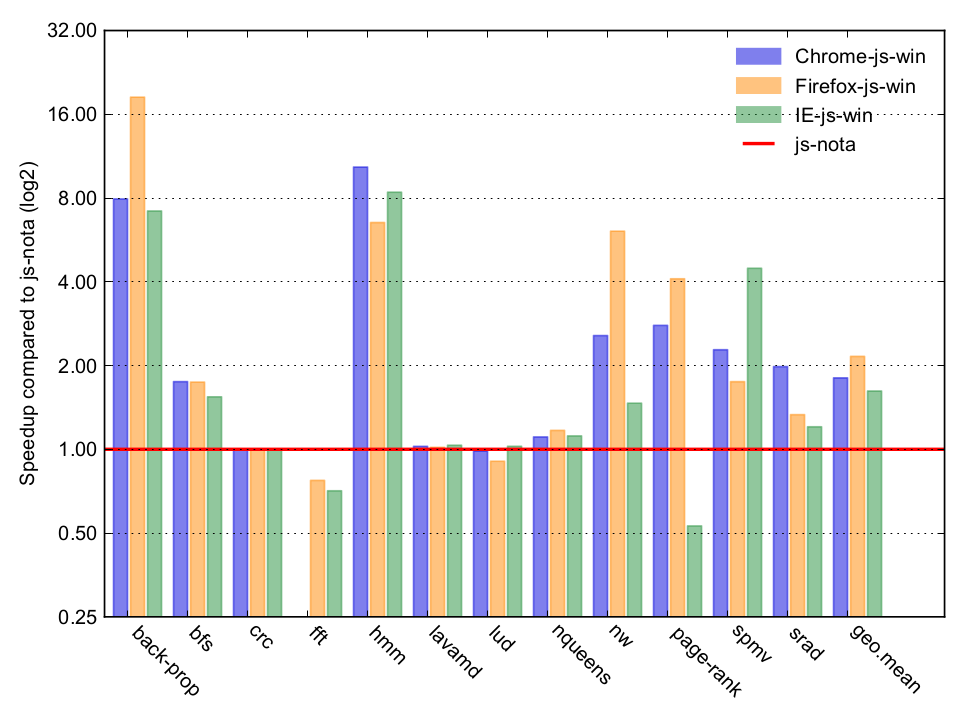
Speed up about 2x on average
back-prop speedup is over 16x
Multiple speed ups over greater than 4x
fft is slower.
Overall, speedups are similar across browsers
Observations
- Browser choice is significant in program speed
- When running numerical computation in the browser, also consider how the app will affect the browser overall
- Chrome - one process per tab will have a minimal affect on other tabs
- Firefox - long running Javascript computation can freeze the entire browser until it has finished
Parallel Performance
Comparing Parallelization performance boosts using OpenCL and WebCL
Background
- OpenCL
- Parallel computing framework for C
- WebCL
- Standard bringing OpenCL to web
- Allows for direct CPU/GPU access with JS

Driving Questions
- Does WebCL provide performance improvements in JS?
- Are the improvements with JS congruent with improvements of OpenCL (vs C)?

WebCL Speed up (Firefox)
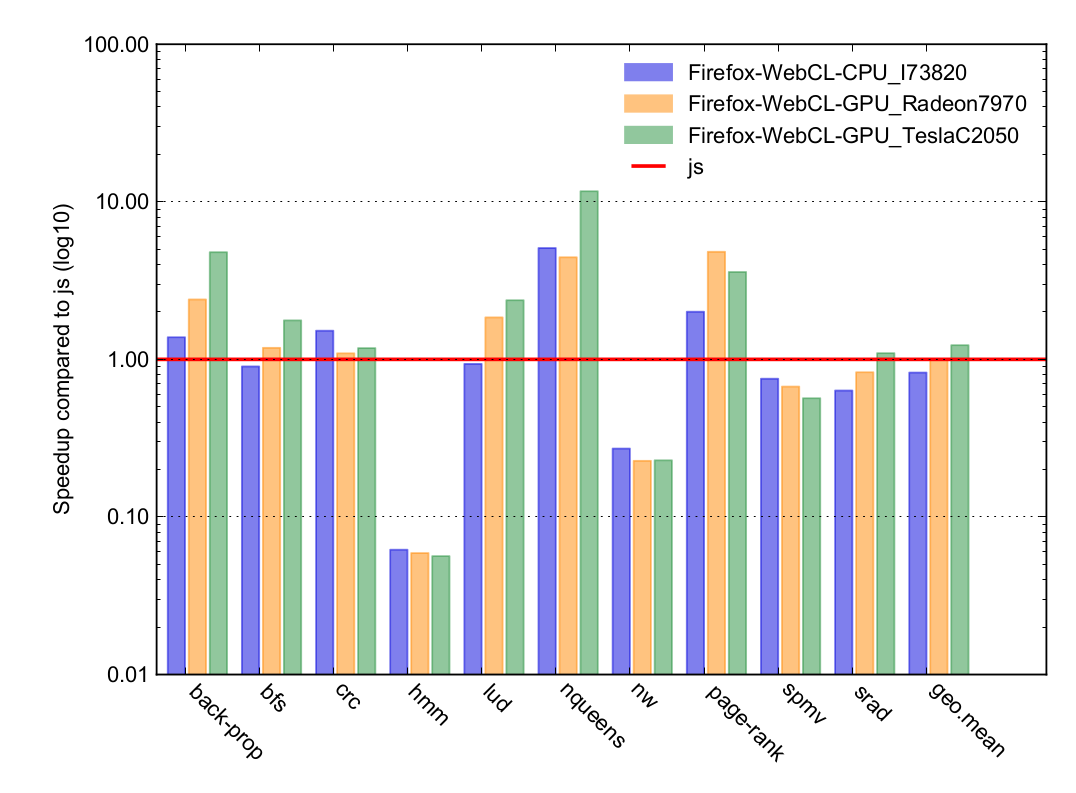
OpenCL Speed up
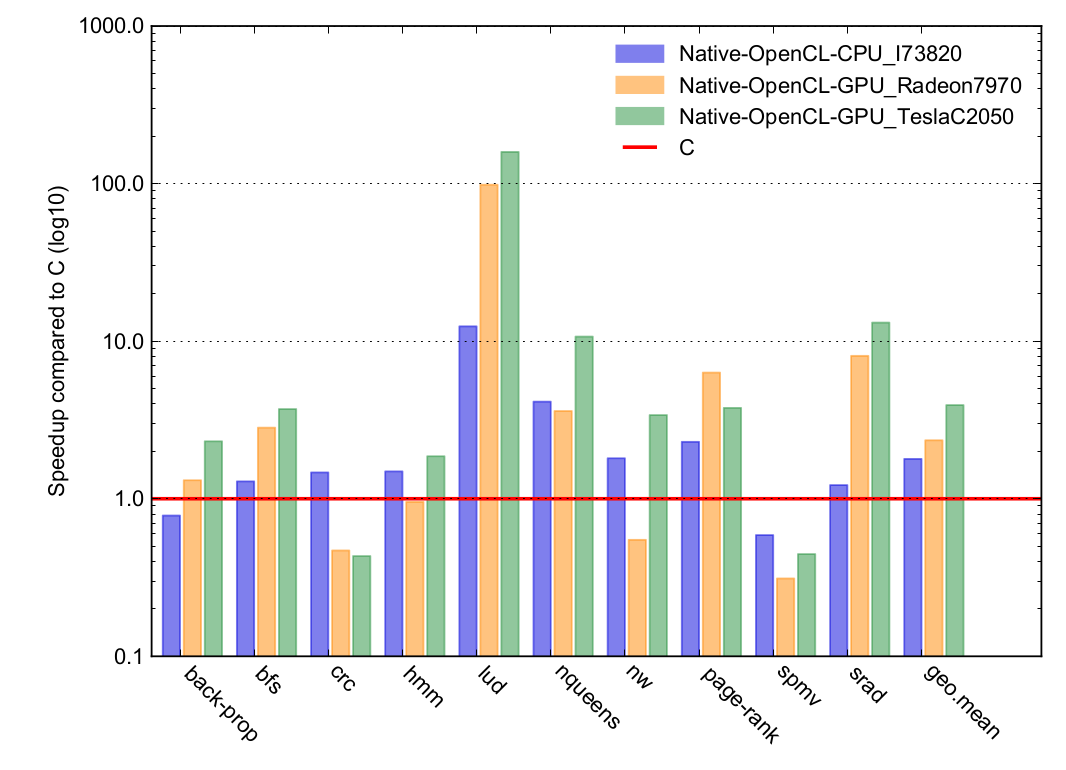
WebCL vs OpenCL
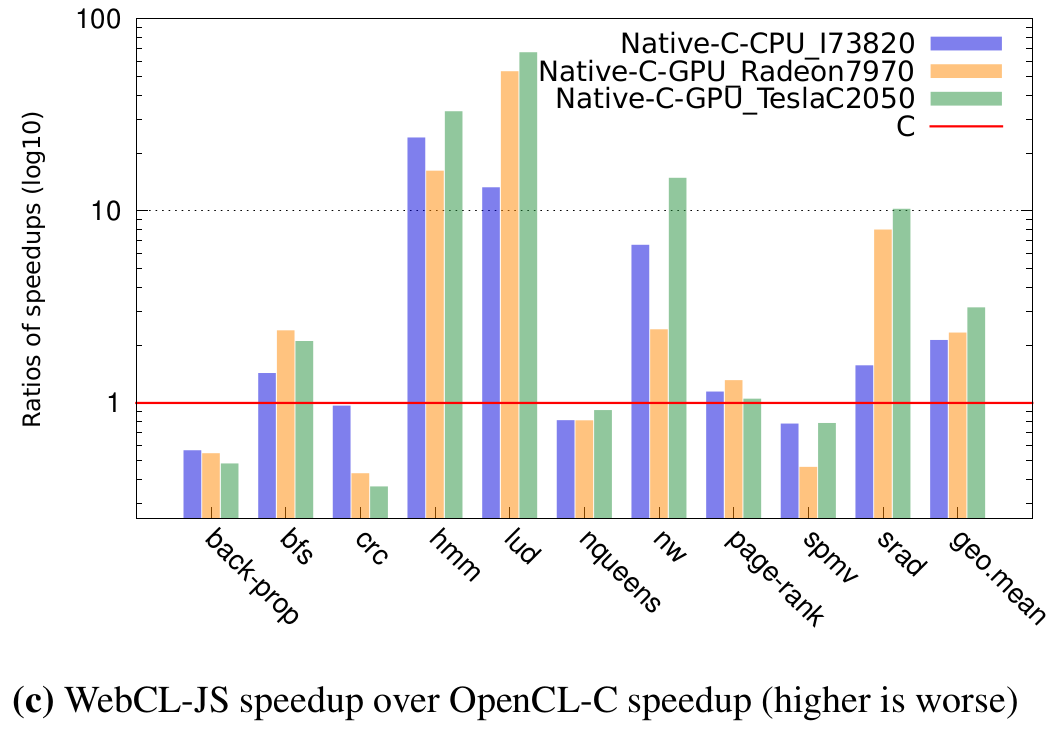
Conclusions
- Asm.js and WebCL make Javascript competitive for numerical computation
- Performance can still vary a lot between browsers and JS interpreter implementations
- Performance optimizations
- Using typed arrays provided a performance boost of about 2x across browsers
- Asm.js further improved this by 15-30%
- WebCL improvements are incongruent with OpenCL
- WebCL still provides significant improvements over native JS
References
Khan, F., Foley-Bourgon, V., Kathrotia, S., Lavoie, E., & Hendren, L. (2014, October). Using JavaScript and WebCL for numerical computations: a comparative study of native and web technologies. In Proceedings of the 10th ACM Symposium on Dynamic languages (pp. 91-102). ACM.
Using Javascript and WebCL for Numerical Computations
By Brian Broll
Using Javascript and WebCL for Numerical Computations
This is an overview of a paper on using Javascript and WebCLfor Numerical Computations.
- 1,181



